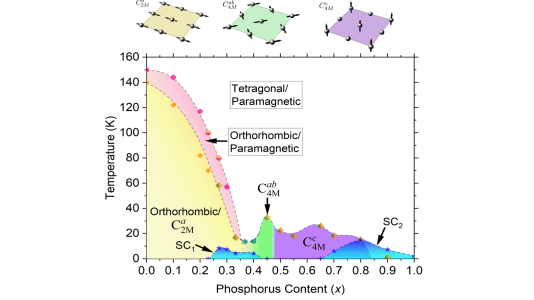
Scientific Achievement
Neutron and synchrotron x-ray diffraction combined with muon spin relaxation and theoretical modeling provides a detailed mapping of magnetic and structural orders in an iron superconductor, revealing the presence of three types of magnetic order within the same compound series.
Significance and Impact
A detailed understanding explaining the various magnetic states in a unified model is necessary towards developing a microscopic theory of these systems
Research Details
- Neutron and synchrotron x-ray diffraction combined with usR and bulk measurements was used to determine the various magnetic orders present in the series LaFeAs1-xPxO.
- Theoretical modeling provides a unified explanation for the emergence of these different states in terms of changes in the correlation strength promoted by chemical substitution.
Argonne National Laboratory seeks solutions to pressing national problems in science and technology. The nation’s first national laboratory, Argonne conducts leading-edge basic and applied scientific research in virtually every scientific discipline. Argonne researchers work closely with researchers from hundreds of companies, universities, and federal, state and municipal agencies to help them solve their specific problems, advance America’s scientific leadership and prepare the nation for a better future. With employees from more than 60 nations, Argonne is managed by UChicago Argonne, LLC for the U.S. Department of Energy’s Office of Science.
The U.S. Department of Energy’s Office of Science is the single largest supporter of basic research in the physical sciences in the United States and is working to address some of the most pressing challenges of our time. For more information, visit https://energy.gov/science.